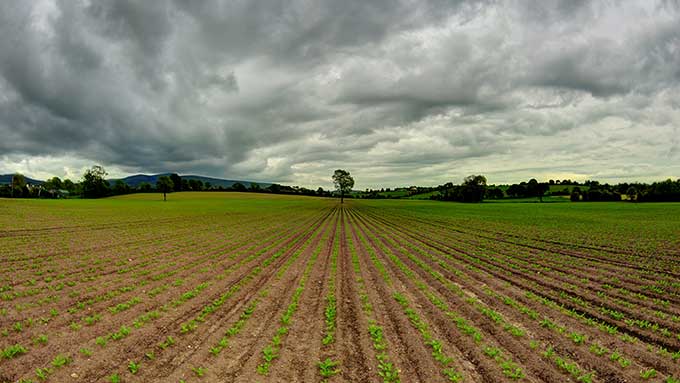Growing forage and fodder crops
Interest in growing fodder crops is increasing as the drive to cut production costs increases. They are already starting to play a significant role alongside grass in low input, low-cost livestock farming. If you plan ahead, fodder crops can also significantly extend the season when grass is finished growing.

Every farm has its own requirements. However, there are three fundamental questions to ask yourself before deciding on the most cost-effective type and variety of fodder crop for you.
1.) When do you want to use the crop?
With versatile, winter hardy varieties available, stock can use fodder crops from June right through to April. If you need extra fodder in the summer, early sown kale and grazing turnips can be ready to feed in June and are useful for plugging a mid or late summer grazing deficit.
2.) When does the land for growing fodder crops become vacant?
Crop rotation, soil type and local conditions will dictate when fodder crops can be sown. Most farmers can now sow fodder crops from as early as February through to September. Catch crops of stubble turnips or kale can be sown early and used by stock in mid to late summer.
3.) How many animals will a fodder crop feed?
Fodder crops are suitable for high yielding dairy cows, beef cattle, ewes and lambs. The number of stock your brassica crop will feed depends on the type of crop sown, the dry matter yield and the stock utilisation rate.
Swedes
- Adaptable crop for both grazing and storage
- Modern varieties can offer the option of being lifted for culinary use
- The pH of the soil should preferably be around 6.5
- Allow a minimum break of four to five years between all brassicas
- To minimize the build-up of pests and particularly diseases a seven-to-eight year rotation is best
- Average yields of packed out Swedes - 35 tonnes per ha
- Individual Swedes weigh around a kilo.
Kale
- An adaptable crop providing useful forage
- Can be ensiled as kaleage or zero and strip grazed
- Kale has small seeds and needs a fine, firm seedbed (like grass) and moisture to emerge
- All brassicas will yield poorly if compaction occurs
- Fertilising at sowing may aide establishment
- Ploughing and powered cultivation is the surest method of establishment
- Direct drilling will be successful in well-structured soils but a good pre-cultivation weed kill with glyphosate is vital
- Kale may be precision drilled at 3kg/ha or direct drilled at 4 kg/ha or broadcast usually with the fertiliser at 5-6 kg/ha
Fodder Rape
- Popular due to its ease of production, the flexibility of its sowing date and its palatability at feeding time
- Can produce a large bulk of fodder in a short period
- Ideal for the reclamation of hill and marginal land
- Use for fattening lambs and lactating ewes
- Very good performance can be achieved with good grazing conditions
- Can be used to supplement cattle and cows but care is needed as they are at greater risk of digestive disorders than sheep
- Taking simple precautions can reduce this risk
- Introduce the Rape gradually
- Restrict intakes
- Always feed hay or silage as a roughage source
- Supplement with phosphorus and Iodine
- Ensure all diets are properly balanced
Stubble Turnips
- Economic and fast to grow
- Produces nutritious, highly palatable feed in just 12-14 weeks after sowing
- The crop can be sown in spring for feeding in late summer or sown in July or August for feeding in October to February
- Not very winter hardy and losses will occur in frosty weather
- Seeding rate depends on sowing conditions and method of sowing
- Fine and firm seedbed required similar to grass reseeding
- Broadcast at 8 kg/ha (3 kg/acre). Direct drill at 5kg/ha (2 kg/acre)
Tagged with: Dairy
